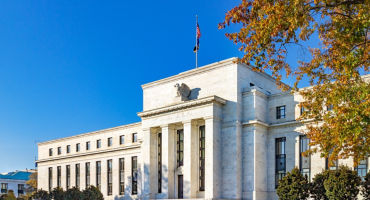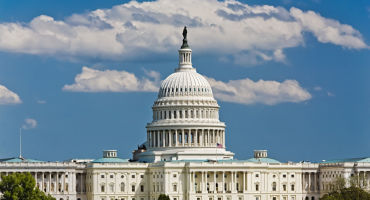- Macro Strategist
Skip to main content
- Funds
- Insights
- Capabilities
- About Us
- My Account
The views expressed are those of the author at the time of writing. Other teams may hold different views and make different investment decisions. The value of your investment may become worth more or less than at the time of original investment. While any third-party data used is considered reliable, its accuracy is not guaranteed. For professional, institutional, or accredited investors only.
By 2030, the recently passed Inflation Reduction Act (IRA) could cut US emissions by 40% (relative to 2005 levels), compared with a 27% reduction under current policies.1 But along with this important environmental impact, the IRA is likely to affect the US economy in a variety of ways, including driving up investment spending, driving down the cost of new technologies, and giving productivity a needed boost.
Like the infrastructure bill passed in August 2021 and the CHIPS Act passed in July 2022, the IRA is consistent with my thesis that we will see higher domestic capital spending in the US over the coming decade. Together, these three bills include roughly US$1 trillion of spending over 10 years. Higher capex should translate into higher productivity and somewhat higher nominal growth, implying higher rates over time.
The bulk of the spending in the IRA is aimed at energy and climate initiatives, with the key provisions totaling US$387 billion (Figure 1). The bill is expected to boost capex in clean technology by as much as 2.7 times the current projected level (Figure 2).
The three largest contributors to greenhouse gas emissions by economic sector are electrical power, industry, and transport. Not surprisingly, then, the key elements of the IRA include the accelerated deployment of clean electricity, the use of carbon capture and storage in industry, and the electrification of transport. I’ll offer some details and observations on each of these areas:
US climate policy has lagged efforts in Europe and other countries globally, but the IRA provides more predictable funding for renewables in the US and makes the path to net zero credible (read more on US efforts here). Several independent climate experts have touted the sound design of key provisions and the potential for meaningful reduction in emissions. Of course, execution will be key. The mix of federal and state involvement means that even with the IRA funds in hand, the pace of deployment could vary based on local policies.
From a political perspective, the IRA represents a badly needed win for the Democrats ahead of the upcoming midterm elections, as climate continues to poll as an important policy area for constituents. While it still appears that the Democrats will lose control of the House of Representatives, they may be able to contain losses and keep the Senate, especially as inflation starts to move lower in coming months as I expect (read more on my inflation outlook).
President Biden’s legacy now includes a boost for both physical and climate infrastructure. The passage of two bipartisan bills — the 2021 infrastructure bill and the 2022 CHIPS Act — alongside the Democrat-led IRA will shape the capacity and competitiveness of US industry for the coming decade. The 2010s brought one of the weakest recoveries in US investment spending in post-war history. It is plausible to assume that the 2020s will see a different pattern (Figure 3). With stronger investment spending, as well as a greater policy focus on domestic production (amid the US/China decoupling), we could see improving productivity growth ahead.
Fossil fuels remain important, of course, as energy is chronically undersupplied and (perversely) likely to see strong demand driven by infrastructure changes required to decarbonize the economy. But in the meantime, technological advances continue to drive down the all-in cost of renewables, with onshore wind and solar already lower in price than hydrocarbon-based power — another plus for productivity (Figure 4).
Finally, it is worth noting that the IRA’s focus on investment spending does not come at the cost of more US public debt, as offsets on the revenue side make the tax credits deficit neutral.
1Source: Repeat Project. Other independent forecasters, such as Energy Innovation and Rhodium Group, also suggest similar numbers.

Japan's reflation story: An overlooked equity opportunity?
Continue readingCommercial real estate debt: Transitional assets deep dive
Continue readingTwilight zone: how to interpret today’s uncertain macro picture
Continue readingURL References
Related Insights
Stay up to date with the latest market insights and our point of view.

Are hedge funds the missing ingredient?
Inflation, volatility, and valuations — they all raise questions about portfolio diversification and resilience. Multi-Asset Strategists Nanette Abuhoff Jacobson and Adam Berger explain why multi-strategy and equity long/short hedge funds could provide the answers. They offer insights on adding allocations to a traditional portfolio mix and a recipe for manager selection.

Japan's reflation story: An overlooked equity opportunity?
Macro Strategist Nick Wylenzek analyzes the structural shifts in Japan's economy and identifies potential equity opportunities.

Commercial real estate debt: Transitional assets deep dive
Our private commercial real estate debt experts explore transitional CRE assets, highlighting their key characteristics, how they differ from other parts of the CRE debt universe, their potential roles in a portfolio, and much more.

FOMC: Cushioning the US labor market
Fixed Income Portfolio Manager Jeremy Forster analyzes the Fed's decision to cut interest rates at the September FOMC meeting.

Is it time to prepare for stagflation?
Discover why concerns about stagflation are rising, and how asset allocators may be able to hedge the effects on their portfolio.

Twilight zone: how to interpret today’s uncertain macro picture
Macro Strategist John Butler and Investment Director Marco Giordano explore how to interpret today’s uncertain macroeconomic picture and its key implications.

Rethinking the Fed’s dual mandate
Is it time for a fresh perspective on the dual mandate? Fixed Income Portfolio Manager Brij Khurana explores the potential benefits of reorienting monetary policy toward maximizing productivity.

Stagflation watch: Thoughts on tariffs, inflation, and Fed policy
US Macro Strategist Juhi Dhawan considers signs the US economy may be moving toward a toxic mix of slowing growth and rising inflation, creating challenges for the Fed and investors.

One Big Beautiful Bill: Why it’s “buy now, pay later” for markets
Multi-Asset Strategist Nanette Abuhoff Jacobson weighs the near-term benefits of the recently enacted US tax and spending bill against the longer-term costs, and suggests several investment implications.

The power of positive and pragmatic thinking
While markets have a lot to worry about, from government policy to geopolitics, Global Investment and Multi-Asset Strategist Nanette Abuhoff Jacobson looks at the world from another angle: What could go right? She offers five reasons for positive thinking and considers the investment implications.

FOMC: Patiently waiting to ease
Jeremy Forster discusses the Fed's steady policy rates, inflation forecasts, and potential interest rate cuts amidst economic uncertainties.
URL References
Related Insights